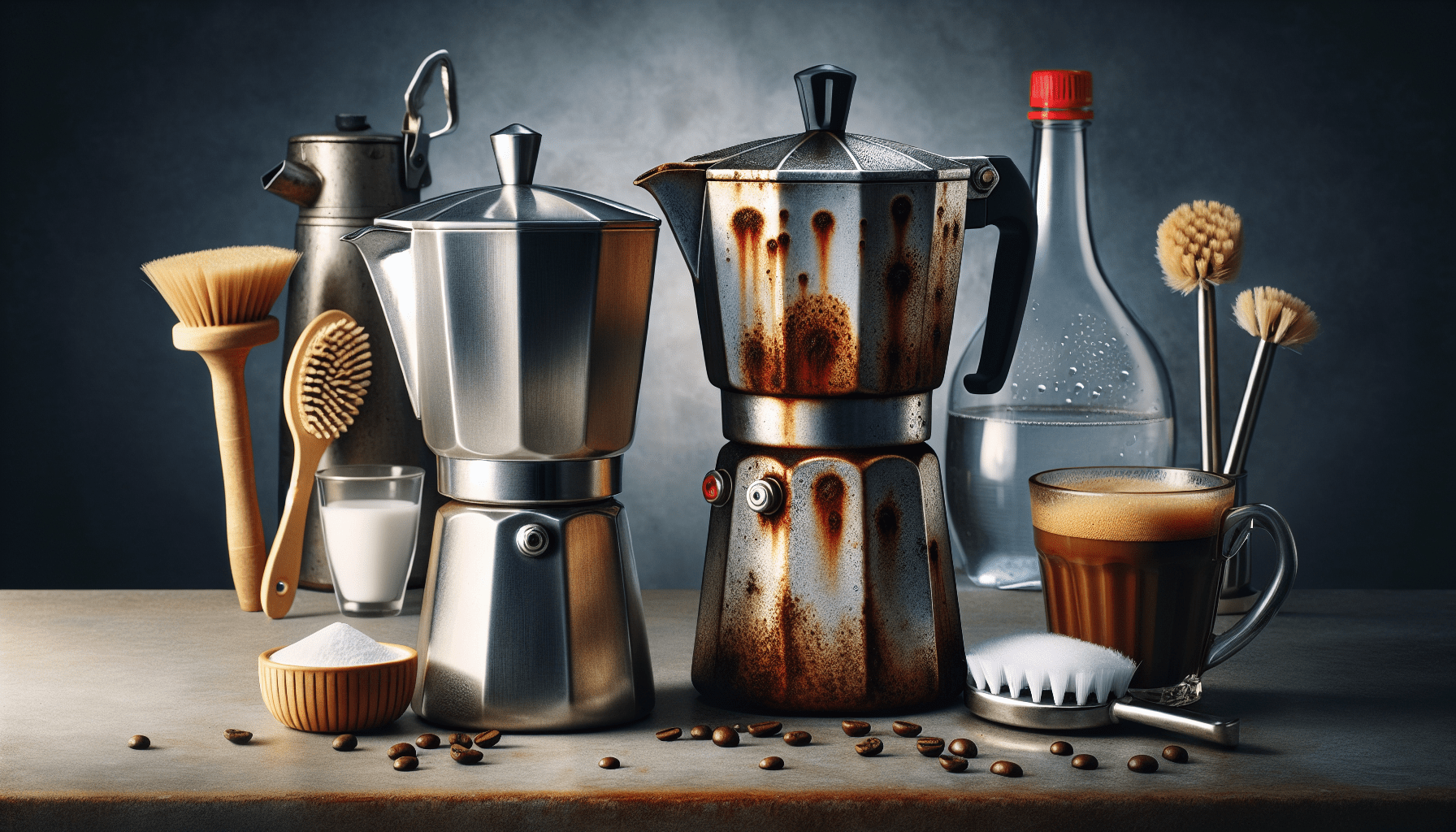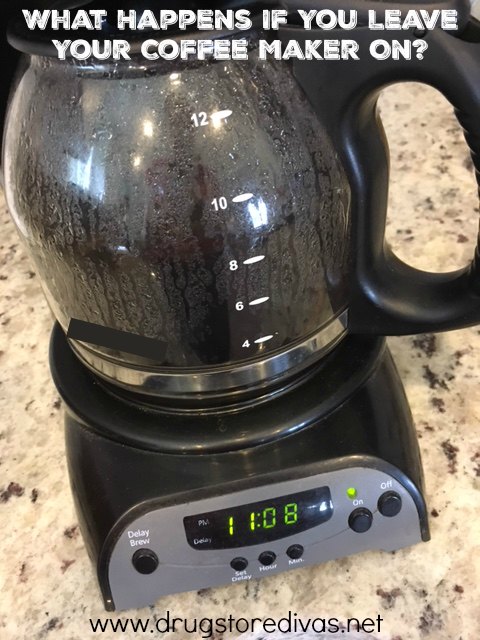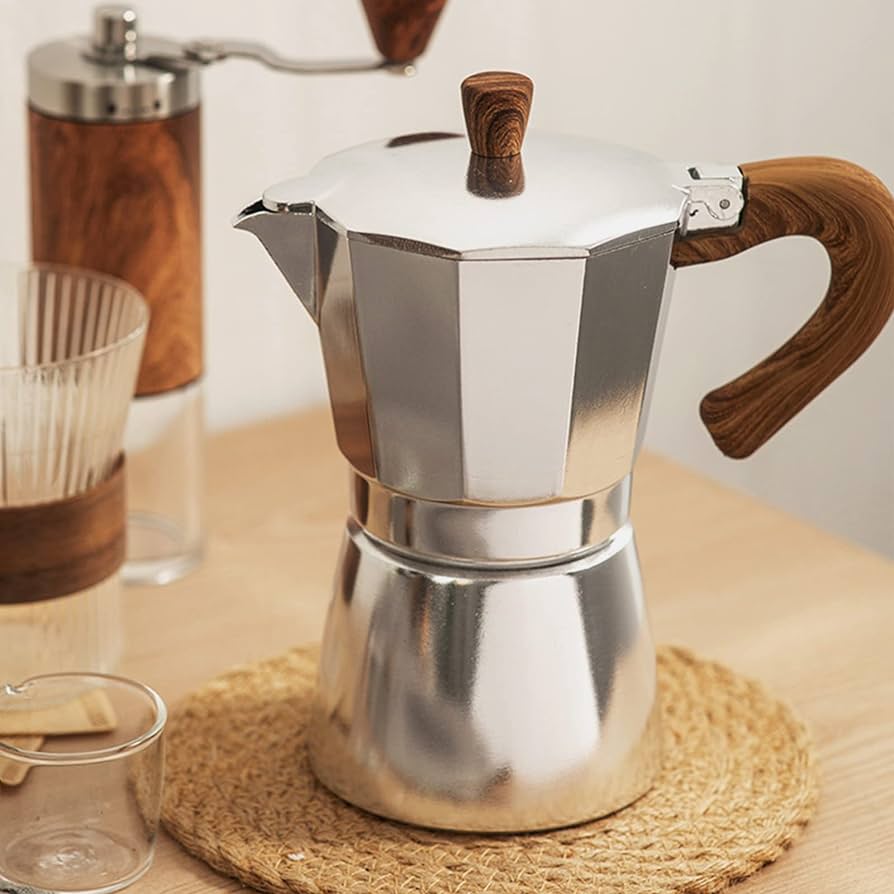Coffee maker pots are a vital part of our morning routine, helping us kick-start the day with a fresh, aromatic cup of joe. But what happens when that trusty pot starts to show signs of rust? Cue frustration and disappointment. In this article, we will explore some simple yet effective ways to prevent coffee maker pots from rusting, ensuring that every sip is as enjoyable as the first. Say goodbye to rust stains and hello to a longer, rust-free lifespan for your beloved coffee maker pot.
Use Filtered or Distilled Water
Avoid Tap Water
When it comes to preventing rust in your coffee maker pot, one of the first steps you can take is to avoid using tap water. Tap water often contains minerals and impurities that can contribute to rust formation over time. These minerals, such as calcium and magnesium, can build up in your coffee maker pot and accelerate the rusting process. By opting for filtered or distilled water instead, you can reduce the risk of rust and improve the longevity of your coffee maker pot.
Utilize Filtered Water
Using filtered water is an excellent alternative to tap water when brewing your favorite cup of coffee. Water filters are designed to remove impurities and minerals that can contribute to rust formation and other issues in your coffee maker pot. By investing in a water filter for your home or using a pitcher with a built-in filter, you can ensure that the water you use in your coffee maker is clean and free from harmful substances that can lead to rust.
Consider Distilled Water
Another option to prevent rust in your coffee maker pot is to use distilled water. Distilled water goes through a process of evaporation and condensation, which effectively removes impurities and minerals. By using distilled water in your coffee maker, you can significantly reduce the chances of rust formation. While distilled water may not be necessary for everyone, it can be a useful solution for those living in areas with particularly hard water or experiencing frequent rusting issues.
Clean the Coffee Maker Regularly
Follow Manufacturer’s Instructions
To maintain the integrity of your coffee maker pot and prevent rust, it is crucial to clean it regularly following the manufacturer’s instructions. Each coffee maker may have specific cleaning guidelines, such as the recommended frequency for descaling or using cleaning solutions. By adhering to these instructions, you can ensure that your coffee maker pot remains in excellent condition and avoid unnecessary rusting.
Remove Lime Scale Buildup
Lime scale, a common occurrence in coffee makers, can contribute to rust formation if left unaddressed. To remove lime scale and prevent rust, consider using a descaling solution or vinegar solution specifically designed for cleaning coffee makers. These solutions can effectively break down and remove the lime scale, reducing the chances of rust forming on the pot’s surface. It is essential to follow the product instructions and rinse the pot thoroughly after cleaning to remove any residue.
Deep Clean with Vinegar Solution
In addition to regular cleaning, it is beneficial to perform a deep clean of your coffee maker pot using a vinegar solution. Vinegar is known for its natural cleaning properties and can help remove built-up residue, oils, and stains that may contribute to rust formation. To deep clean your pot with vinegar, mix equal parts of vinegar and water and run the solution through a brewing cycle. Afterward, rinse the pot thoroughly with clean water to eliminate any vinegar odor.
Dry the Coffee Maker Pot Properly
Empty and Rinse Immediately
After brewing a pot of coffee, it is important to empty the contents and rinse the coffee maker pot immediately. Leaving leftover coffee or wet grounds in the pot can create a moist environment that promotes rust formation. By promptly emptying and rinsing the pot, you can minimize the amount of moisture inside and prevent rust from developing.
Allow Pot to Air Dry
After rinsing the coffee maker pot, it is best to allow it to air dry completely. Placing a damp pot back onto the coffee maker or storing it while still wet can trap moisture and contribute to rusting. By giving the pot ample time to air dry, you ensure that it is moisture-free before reusing or storing it.
Avoid Keeping Wet Grounds in Pot
In addition to emptying and rinsing the pot, it is essential to avoid keeping wet coffee grounds in the pot. Moist coffee grounds can stick to the pot’s surface and create a conducive environment for rust formation. To prevent this, dispose of wet coffee grounds properly and rinse the pot thoroughly to remove any residue. Taking these simple steps can go a long way in maintaining the condition of your coffee maker pot.
Avoid Using Abrasive Cleaning Agents
Avoid Harsh Chemical Cleaners
When it comes to cleaning your coffee maker pot, it is crucial to avoid using harsh chemical cleaners that can damage the pot’s surface and increase the risk of rusting. Strong chemical cleaners may break down the protective coating or cause pitting on the pot, making it more susceptible to rust formation. Instead, opt for gentle dish soap or natural cleaning solutions specifically formulated for coffee maker pots. These milder options can effectively clean your pot without compromising its integrity.
Use Gentle Dish Soap
Using gentle dish soap can be an effective way to keep your coffee maker pot clean without causing damage. Look for dish soaps that are free from harsh chemicals and additives. When washing your pot, use a soft sponge or cloth to gently scrub away any residue or stains. Rinse the pot thoroughly with clean water to remove any soapy residue before allowing it to dry. By using gentle dish soap, you can ensure that your coffee maker pot remains clean and rust-free.
Consider Natural Cleaning Solutions
If you prefer to use natural cleaning solutions, there are several options available that can effectively clean your coffee maker pot without the use of harsh chemicals. For example, a mixture of baking soda and water can be used to create a paste that can remove stains and residue from the pot’s surface. Lemon juice can also be effective in removing stains and providing a natural shine to the pot. When using natural cleaning solutions, be sure to rinse the pot thoroughly to remove any residue and allow it to dry completely.
Store the Coffee Maker Pot Correctly
Ensure Pot is Completely Dry
Before storing your coffee maker pot, it is essential to ensure that it is completely dry. Any residual moisture left in the pot can lead to rust formation over time. After cleaning and drying the pot, use a clean towel or cloth to wipe away any remaining moisture. Double-check that the pot is completely dry before proceeding with storage.
Avoid Stacking or Cluttering
To prevent unnecessary scratches or damage to your coffee maker pot, it is best to avoid stacking other items on top of it or cluttering the storage area. Stacking or placing heavy objects on the pot can cause dents or scratches that can compromise its integrity and increase the risk of rusting. Store the pot in a dedicated space where it can maintain its shape and remain protected.
Use Protective Covers or Bags
If you want to provide an extra layer of protection for your coffee maker pot, consider using protective covers or bags. There are specific covers designed to fit coffee maker pots and provide a barrier against dust, moisture, and other elements that can contribute to rust formation. These covers can be especially useful if you plan on storing the pot for an extended period or if it will be stored in a less controlled environment.
Regularly Inspect for Rust Formation
Check Inside of Pot
Regularly inspect the inside of your coffee maker pot for any signs of rust formation. Rust can first appear as small spots or discoloration on the pot’s surface. By catching these early signs, you can take preventive measures and address the issue before it worsens. If you notice any rust spots, consider deep cleaning the pot or using rust removal products specifically designed for coffee maker pots.
Inspect Bottom and Handle
In addition to the inside, it is important to inspect the bottom and handle of your coffee maker pot for any signs of rust. These areas are often in frequent contact with moisture and heat, making them more susceptible to rust formation. Regularly check these areas and address any rust spots promptly to prevent further damage.
Address Minor Rust Spots Early
If you notice minor rust spots on your coffee maker pot, it is essential to address them early. Use a soft sponge or cloth to gently scrub the affected area with a mixture of baking soda and water or a rust removal product. Rinse the pot thoroughly and ensure it is completely dry before further use or storage. By addressing minor rust spots early, you can prevent them from spreading and causing more significant damage to the pot.
Utilize Protective Coatings or Liners
Use Ceramic or Glass Lined Pots
Consider using coffee maker pots with ceramic or glass linings to provide an extra layer of protection against rust. These linings create a barrier between the coffee and the metal, reducing the risk of rust formation. Look for coffee makers that specifically advertise ceramic or glass linings as a feature to ensure you are choosing a pot that is more resistant to rust.
Apply Rust-Resistant Coatings
To further protect your coffee maker pot from rust, you can apply rust-resistant coatings. These coatings create a protective layer on the pot’s surface, preventing moisture from coming into direct contact with the metal. Look for food-grade rust-resistant coatings that are safe for use with coffee and follow the manufacturer’s instructions for application. Regularly inspect and reapply the coating as needed to ensure maximum protection.
Consider Silicone Lid Liners
Lid liners made of silicone can help create a tight seal between the coffee maker pot and the lid, preventing moisture from entering and causing rust. Silicone is resistant to moisture and can withstand high temperatures, making it an excellent choice for this purpose. Consider purchasing silicone lid liners specifically designed for your coffee maker pot to provide an extra level of protection against rust.
Avoid Leaving Coffee Sitting in the Pot
Empty the Pot Promptly
Leaving coffee sitting in your coffee maker pot for long periods can lead to moisture buildup and rust formation. It is essential to empty the pot promptly after brewing to prevent this. If you have brewed more coffee than you can consume at once, consider transferring the remaining coffee to a thermal flask or an airtight container to maintain its freshness while preventing moisture from accumulating in the pot.
Transfer Leftover Coffee to Thermal Flask
To keep your coffee fresh and prevent rust formation, it is recommended to transfer any leftover coffee to a thermal flask. Thermal flasks are designed to maintain the temperature and flavor of the coffee for an extended period without exposing it to the air. By transferring the coffee to a thermal flask, you not only prevent rust but also ensure that you can enjoy a hot and fresh cup of coffee later.
Avoid Letting Coffee Stagnate
Leaving coffee to stagnate in your coffee maker pot, whether empty or with a small amount of liquid, can increase the risk of rust formation. Stagnant coffee provides a suitable environment for bacteria and mold growth, which can further contribute to rusting. To prevent this, be mindful of not letting coffee sit in the pot for prolonged periods. Empty and clean the pot promptly to maintain its longevity and prevent rust.
Avoid Extreme Temperature Changes
Allow Pot to Cool Gradually
To prevent thermal shock and potential rusting, it is crucial to allow your coffee maker pot to cool gradually. Placing a hot pot directly under cold water or exposing it to extreme temperature changes can cause the metal to contract and expand rapidly, leading to potential damage and rust formation. After brewing, allow the pot to cool naturally at room temperature before cleaning or storing it.
Avoid Placing Hot Pot in Cold Water
Similarly, avoid the temptation to place a hot coffee maker pot directly into cold water for rapid cooling. The sudden change in temperature can cause the metal to warp or crack, creating vulnerabilities that can lead to rusting over time. To ensure the longevity of your pot and prevent rust, allow it to cool gradually in a safe location before proceeding with cleaning or storage.
Prevent Thermal Shock
Thermal shock is a condition that occurs when there is a sudden and extreme change in temperature. Thermal shock can compromise the integrity of your coffee maker pot, leading to rusting and other issues. To prevent thermal shock, be mindful of the temperature changes your pot is exposed to, and take precautionary measures such as gradual cooling and avoiding extreme temperature fluctuations.
Replace a Rusty Coffee Maker Pot
Consider Age and Extent of Rust
If your coffee maker pot has experienced extensive rusting, it may be time to consider replacing it. The age of the pot and the extent of rust damage should be taken into account when deciding whether to replace it or continue using it. While minor rust spots can be addressed and prevented, severe rusting can compromise the pot’s functionality and pose health risks. Evaluate the condition of your pot and determine if replacement is necessary for your safety and enjoyment of coffee.
Check If Replacement Parts are Available
Before purchasing a new coffee maker pot, consider checking if replacement parts are available for your current model. In some cases, a rusty pot may be replaced with a new, identical one, ensuring that it fits perfectly with your existing coffee maker. Contact the manufacturer or check their website to inquire about replacement parts availability, maximizing the use of your coffee maker while ensuring that rust-related issues are resolved.
Invest in a New Coffee Maker
If your current coffee maker pot is old, extensively rusted, or replacement parts are not available, it may be time to invest in a new coffee maker. While it can be disappointing to let go of a tried and trusted coffee maker, upgrading to a new model can provide improved features, advanced rust-resistant materials, and ensure the safety and quality of your coffee. Research different brands and models to find a coffee maker that suits your needs and offers durability against rusting.
In summary, preventing rust in your coffee maker pot requires regular cleaning, proper drying, and using the right water. By avoiding tap water, utilizing filtered or distilled water, and following manufacturer’s instructions for cleaning, you can minimize the risk of rust formation. Additionally, storing the pot correctly, avoiding abrasive cleaning agents, and promptly emptying the pot can contribute to its longevity. Regularly inspecting for rust, utilizing protective coatings or liners, and preventing coffee from sitting in the pot can further aid in preventing rust. Finally, being mindful of extreme temperature changes and knowing when to replace a rusty pot are important considerations for maintaining a rust-free coffee maker pot. By following these tips, you can enjoy fresh and rust-free coffee for years to come.




